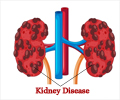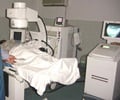Cedars-Sinai Medical Center scientists have developed innovative laboratory techniques to improve opportunities and success rates for kidney transplant candidates
An article in the Sept. 27 issue of the journal Transplantation has revealed that kidney transplant specialists at Cedars-Sinai Medical Center have developed innovative laboratory techniques to improve opportunities and success rates for kidney transplant candidates who are at high risk of organ rejection because of previous exposure to donor antigens.
Tissue compatibility issues exist for all patients receiving transplanted organs but rejection risk is much greater in those with high exposure to “non-self” human leukocyte antigens (HLAs). Exposure may come through blood transfusions, previous transplantation or even pregnancy, when the mother is exposed to the father’s antigens expressed in the cells of the developing baby. The immune system is then “sensitized” to those antigens, developing antibodies to fend them off even if the antigens arrive in the form of a potentially life-saving donated organ.Stanley C. Jordan, M.D., medical director of Cedars-Sinai’s Kidney Transplant Program and of the Division of Nephrology, began studying the use of intravenous immunoglobulin (IVIG) 20 years ago as a way to modulate the immune system, “desensitizing” highly sensitized patients to make incompatible organs compatible and reduce rejection risks. IVIG therapy became a Medicare-approved therapy in 2004 when it was found effective in a multicenter study partly funded by the National Institutes of Health.
Jordan and his colleagues also developed laboratory protocols using antigens and patient blood that were useful in predicting which patients were most likely to benefit from desensitization. Now they have adopted new technology – solid phase assays – that uses beads coated with specific HLA antigens to much more precisely determine the specificity and strength of a patient’s antibodies.
“With solid phase assays, we can tell the physician that a patient has antibody to a particular antigen because it bound to a specific bead. This allows us to do a more quantitative analysis and predict more accurately which patients are the best candidates to have a successful transplant with a low risk of acute rejection. We also can predict which patients are at very high risk for acute rejection. The physicians can then preemptively treat patients before they go through a full-blown acute rejection episode, which is a risk factor for chronic rejection,” said Nancy L. Reinsmoen, Ph.D., director of Cedars-Sinai’s HLA Laboratory and first author of the article.
In the study, antibody levels were tested before treatment, before transplant and several times after transplant in 16 sensitized patients who were treated according to the Cedars-Sinai desensitization protocol. Cedars-Sinai is the only major center in the United States using preemptive desensitization for deceased-donor kidney transplant recipients. Eight patients in this study received organs from deceased donors and eight from living donors.
More than 70,000 patients with end-stage renal disease are on transplant wait lists in the United States but fewer than 18,000 kidney transplants are performed each year, in part because about one-third of kidney failure patients have high “anti-donor” antibody levels and few centers specialize in desensitization therapy. Many potential candidates are told that a transplant is not possible even if a potential donor’s tissue and blood types otherwise match perfectly because their hyper-vigilant immune systems would reject organs from the majority of the population.
Advertisement
“The new monitoring techniques developed by Dr. Reinsmoen and her laboratory team at Cedars-Sinai have greatly improved our ability to predict patients at risk for rejection before the transplant is done,” said Jordan.
Advertisement
Source-Newswise
RAS/SK















